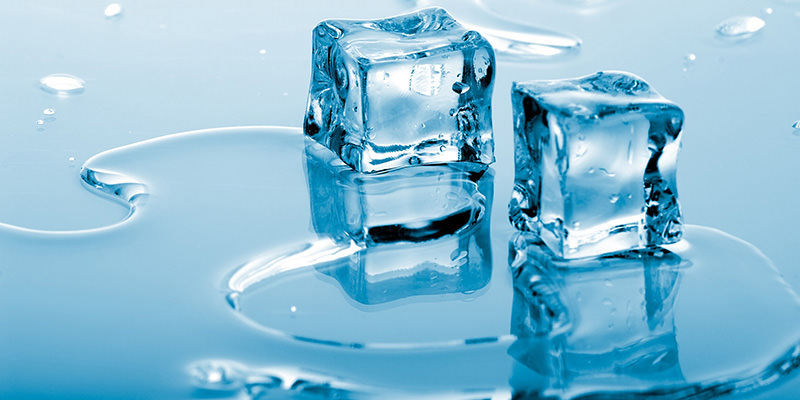You know the story. You pour water—even filtered water—into some neatly square ice cube trays, place it kindly into the fridge the way you’d tuck a baby bear into hibernation (we all do that, right?). A bit later, you open the fridge, expectant parent of some beautifully frozen cubes, and you find a cluster of cloudy half-squares, the warped frozen geometry of your basic, super simple chemistry experiment.
Why—if we may so bold, galldernit—don’t your cubes freeze clear? The basic reason most ice cubes don’t freeze perfectly clear is because of impurities in the water (lime, fluoride, calcium). The purer the water, the clearer the cubes. If you have impure water, which most of us have at home, it’ll look clear closer to room temp, but once you freeze it, some of that cloudiness comes out, and you’ve got cloudy cubes.
So how to do you get the beautifully clear cubes you’ll find at a bar—you know, those carefully carved spheres that seem to take up a tad too much room in your cocktail? Or the crystal-clear squares that look like they came out of Mario World or some arctic expedition?
If you’re freezing at home—as many of us are—you can do a couple things. Either boil the water briefly or, a better idea, use distilled water. The purer the water, the better chance you have at getting clear cubes. Except, alas, it’s still not that simple.
Turns out perfectly clear cubes have to do with temperature application, as in freezing from the inside or outside. When water freezes, you’d think any impurities would freeze first, on the outside. But then—you don’t know water crystallization do you? (It’s OK, neither did we.) The basic science is crystallization forces the impurities inside the cube, kind of like the way a kid cleaning his room shoves everything under the bed. The outside looks clean, the interior is a terrifying cloud of chaos.
And then the final culprit, everyone’s favorite thing to breathe in, but everyone’s least favorite thing to freeze in a tray: air bubbles. As water freezes, air bubbles form. The only way to avoid this is by doing what big industrial ice cube makers do (your home machine likely can’t do it as well): freezing water in layers at a slower pace to prevent the formation of air bubbles. As Kold Draft—a fairly common bartender-ready ice cube machine—does it: “KOLD-DRAFT uses…an evaporator, inverted atop a molded water plate.” Sounds reasonable, right?
Not at all. We’re going to break it down, human language style: KOLD-DRAFT apparently uses holes (“corresponding to every cell through which the water is pumped vigorously”), basically meaning water is extremely carefully placed both at the top and “down the four sides” of a potential cube. This is extreme, careful precision of water layering. At a specified temp, no less. The conclusion they get to (hooray!) is “as the water circulates continuously through the cell, it forms ice smoothly on the cold surfaces, eliminating air and flushing away impurities, producing one perfect ice cube per cell.”
They get rid of impurities by “automatic rinsing,” basically getting rid of water containing minerals—which, when you think about it, we tend to pay a lot for, right? On the other hand, for presentation’s sake, there’s nothing quite as dramatic as a crystal clear cube in the middle of your tumbler. Not to mention, they’ll tend to taste purer, since you’re using purer water.
So again, how to achieve at home? Well, for one, boil water briefly. Two, ideally used distilled water. Three, there are some incredibly effective time consuming methods available to you. Our best bet—purify your water as best you can, freeze it at a lower temp, and hope your friends aren’t sticklers for being able to see through their cubes. In which case, they can go to a cocktail bar and pay $15.

